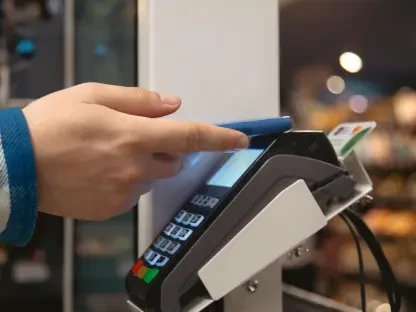Diving into the evolving world of retail and payment systems, I had the privilege of speaking with Zainab Hussain, a seasoned e-commerce strategist with deep expertise in customer engagement and operations management. With years of experience navigating the complexities of retail technology, Zainab offers a unique perspective on how collaboration is reshaping the industry. Our conversation explores the shift from isolated systems to integrated ecosystems, the intricacies of payment processes, the economic pressures facing retailers, and the transformative power of coordinated innovation.
How has the landscape of collaboration evolved in the retail and payment industry over recent years?
Collaboration has become absolutely central to the retail and payment space. In the past, the focus was often on individual components—payment systems just needed to function on their own, and retailers could manage with disconnected tools. But today, with the expansion of ecosystems involving hardware providers, payment processors, and data services, working in isolation is no longer viable. Retailers now expect every piece to integrate seamlessly. I’ve seen firsthand how partnerships, like shared fraud prevention initiatives, have drastically improved outcomes by reducing risks and speeding up response times across the board.
Can you walk us through what happens behind the scenes when a customer taps their card or phone to make a payment?
It looks simple on the surface, but there’s a lot going on. When a customer taps their card or phone, the transaction involves a stack of components—compliance checks, fraud detection, certification processes, connectivity, and data handling. Each piece has to communicate instantly. If there’s a hiccup, like a delay in fraud verification, the whole process can stall, frustrating customers and potentially costing sales. Seamless interaction between these layers is critical to keep the experience smooth and reliable for everyone involved.
Why do you believe coordinated innovation outperforms standalone efforts in the payment sector?
Standalone innovation often hits a wall in today’s complex retail environment. It might solve one problem but can create incompatibilities or inefficiencies elsewhere. Coordinated innovation, on the other hand, builds on shared frameworks, ensuring solutions work across the ecosystem. For instance, when tech firms align on standards, it reduces the time retailers spend troubleshooting. I’ve seen cases where coordinated efforts, like unified payment protocols, have led to faster feature rollouts and fewer in-store disruptions, proving how powerful this approach can be.
What can you tell us about the Bank of England’s partnership with Pay.UK and its impact on national payment infrastructure?
This collaboration is a game-changer. The Bank of England and Pay.UK are working on a long-term roadmap to modernize the national payment infrastructure, with a focus on bringing public and private sectors together. The goal is to create a more secure, scalable system that benefits everyone. It’s a clear signal that the future of payments lies in coordination—when multiple stakeholders align, the system becomes safer and more efficient, setting a strong foundation for innovation.
How are today’s economic challenges influencing retailers’ strategies around payment systems?
Retailers are under immense pressure. Recent data from the Office for National Statistics shows sales volumes still lagging below pre-pandemic levels, while operational costs keep climbing. This economic squeeze makes inefficiency a direct hit to the bottom line. Fragmented payment systems, where retailers have to patch together solutions or deal with constant troubleshooting, are becoming a financial burden. As a result, there’s a strong push toward integrated, cost-effective systems that save time and resources.
When you describe collaboration as ‘performance infrastructure’ in the retail and payment space, what exactly do you mean by that?
I see collaboration as a tangible driver of performance, not just a nice idea. When tech firms and retailers align on standards or share data, it directly boosts efficiency—think less downtime and quicker problem resolution. Practically, this means saving time on fixing incompatibilities, reducing risks through faster fraud detection, and enabling innovations like loyalty programs via open APIs. It’s infrastructure in the sense that it underpins everything retailers do, letting them focus on creating value for customers.
What is your forecast for the future of collaboration in the payment and retail technology ecosystem?
I’m optimistic that collaboration will only deepen. As ecosystems grow more complex, the need for shared standards and accountability will become even more critical. I foresee a future where open APIs and interoperable systems are the norm, not the exception, allowing retailers to innovate without constant roadblocks. We’ll likely see even stronger public-private partnerships shaping infrastructure, ensuring payments are faster, safer, and more inclusive. It’s an exciting time, and I think the industry is on the cusp of some truly transformative changes.









